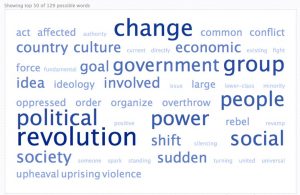On Wednesday, Sep 11th, We started out class with more tips and tricks on our primary source essay that is due on Friday Sep13th.
Next, we heard from Elliot presenting his LA in the News piece. The headline chosen was Mothers Force to Sleep in the Hallways of the South Hospital due to a Lack of Space. This story was set in Honduras and was expressing the overcrowding in the maternity ward in a third world context. Elliot expressed the hospitals lack of concern given for these new mothers who’s children had fevers. This article told two different stories of women sleeping on the floor or on benches after giving birth to be with their sick baby. Elliot then tells a brief antidote about his personal time in Honduras and the conditions there.
Professor Holt briefly defined Oral Tradition in context of Corridos in Mexico before we split into Then we split into discussion groups. Oral Tradition is a way of passing information, tradition spread by word of mouth, this could be stories, songs, folklore etc. In the context of class we were talking about Corridos; A popular narrative song and poetry that forms a ballad. Topics vary from oppression, history, daily life for peasants, gossip and other social relevant topics We split into groups to talk about the Corrido’s we read about and how to analyze them. One of the discussion questions focused on was: What are Corridos and how can we use them as a primary source? We spent about ten minutes at the end of class to listen to Tiempos Amargos (https://www.youtube.com/watch?v=e2tlHtx0Zgc), a Corrido we read about.
In our large class discussion one interesting question to come up was wether Corridos were just a northern tradition or if it was also southern. From what I could find there are some about Zapata but not much about specific southern culture. This doesn’t necessarily mean they did not exist in southern Mexico but they are harder to find today. Another topic we talked about was the fact that this was a masculine genera. We also noted the way Corridos have changed over time and now they are either folkish or they are about the drug environment. There is a new subcategory of corridos called Narcocoridos that are about the current drug situation in Mexico. If you want some more Corridos you can listen to click here: https://www.youtube.com/watch?v=S_XG8NMCOPM
Here are some more Corridos lyrics that I found in english about notable events of the revolution:
http://inside.sfuhs.org/dept/history/Mexicoreader/Chapter5/rev%20corridos.pdf
Questions:
What was the role of gender in this Corridos tradition? why is it considered masculine?
What is the benefit of looking at Corridos as a primary source? How can we use it to relate to other source we have looked at?
During the time of the revolution would one consider Corridos more as propaganda or as storytelling? or dose is it dependent on the context and not the time period?

